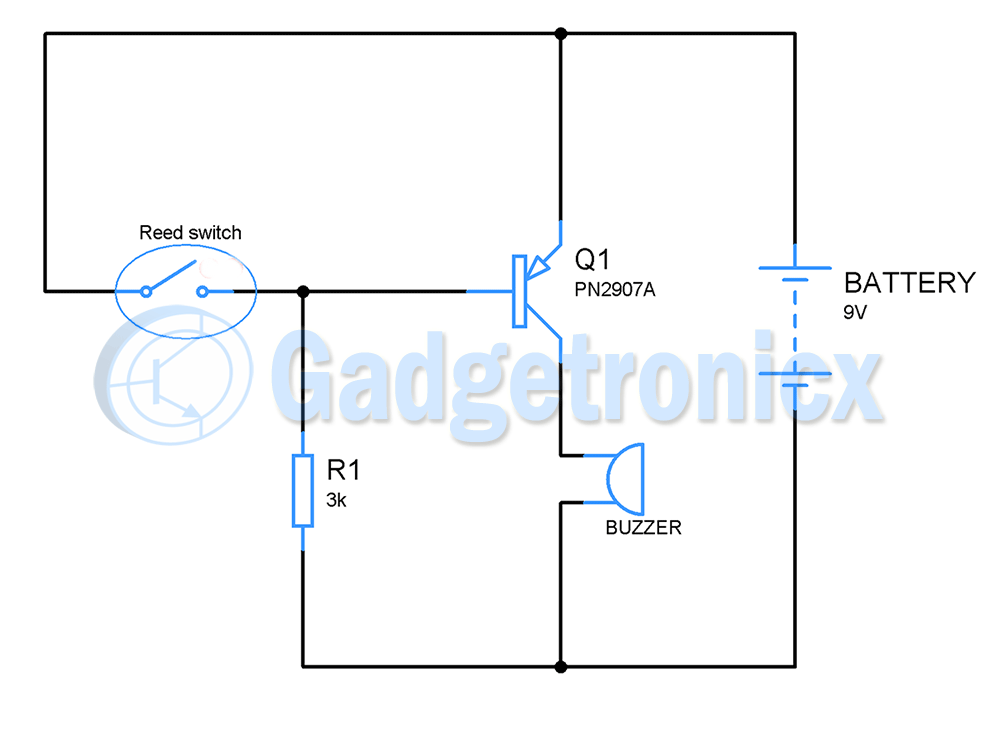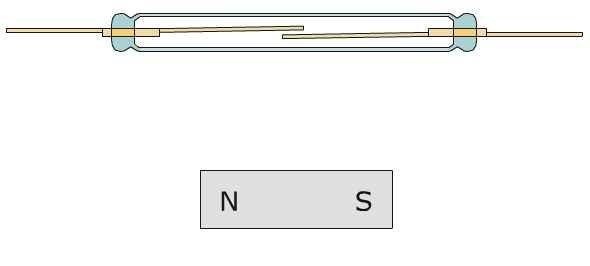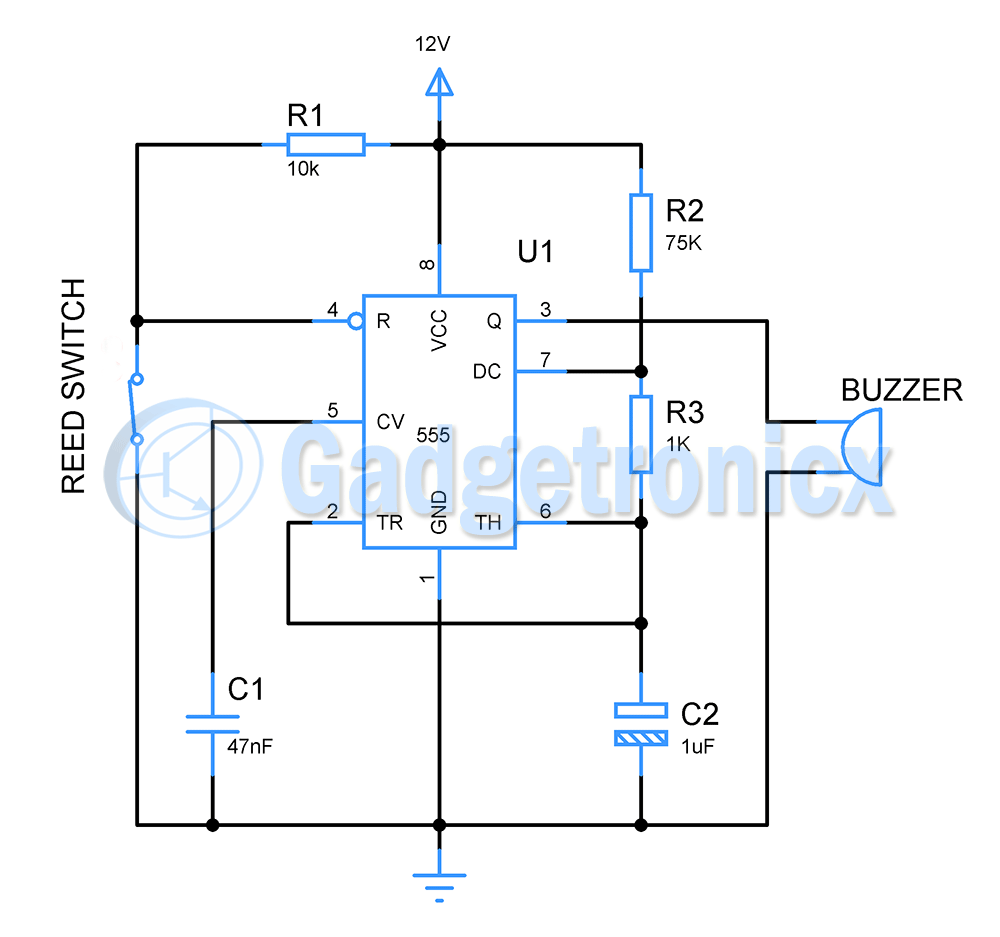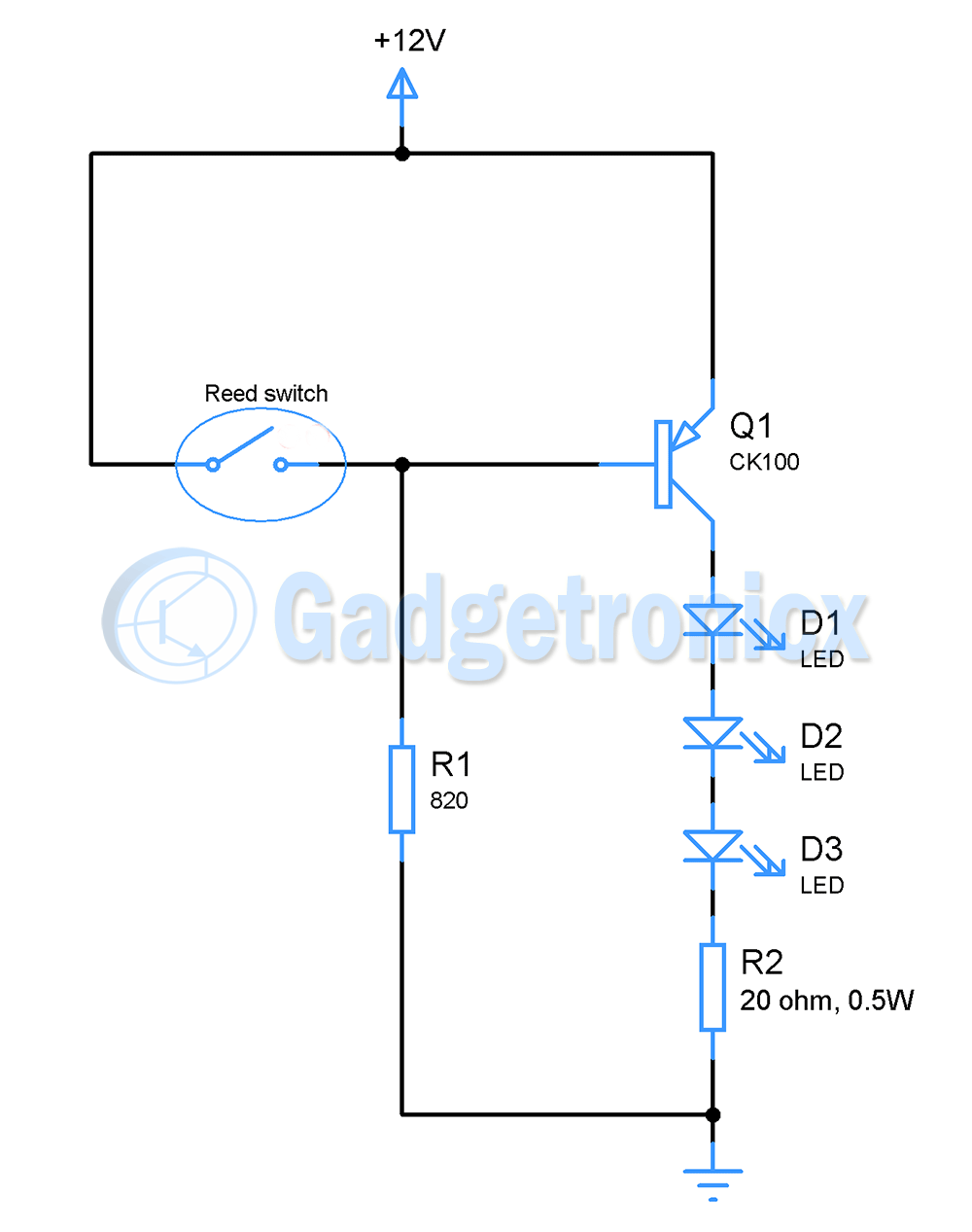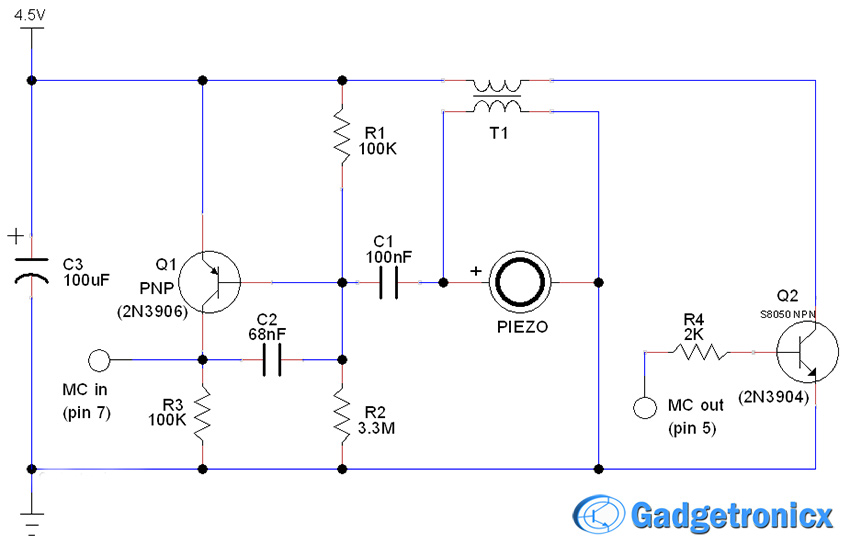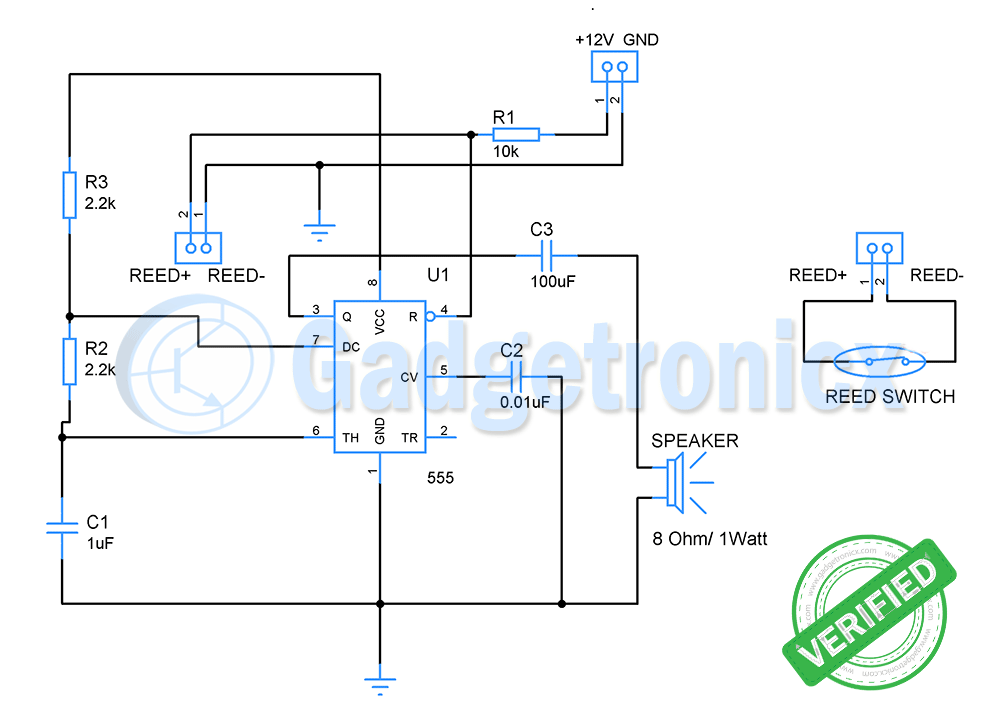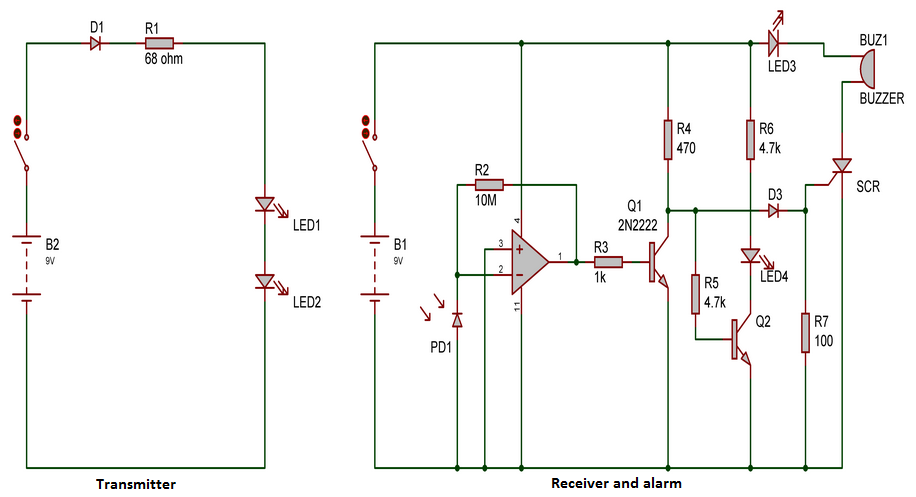Thief or Burglar or door alarm is obviously most famous form of hobby circuit that we find in the Internet. Each of these circuits use different components and different trigger mechanism to activate the circuit. Here is a circuit which uses the magnets as a triggering mechanism to activate the circuit. The highlight part of the circuit is that it is built using a single PNP transistor and few other discrete components and powered by a 9V battery.
WORKING OF THIEF/ DOOR ALARM CIRCUIT:
The circuit is built around PNP transistor which is used as switch in here. Many of us knew that transistor can act as a current controlled switch which can be controlled by the current input to the base current. Read about transistors acting as a switch in this tutorial.
Reed switch serves the purpose of triggering the transistor in case magnet is moved away from its proximity. This is switch which gets activated or closed when a magnet is brought near to the switch. When the magnet is moved away the switch gets open leaving the circuit open or deactivate the link. Magnet and the reed switch should be set up in such a way, the magnetic field will influence the reed switch and close it when the door is closed. When the door is open the switch will be open. Therefore when the door is closed the transistor will remain in off state and when opened transistor will move in to ON state.
Once the reed switch is open, the resistor R1 pulls the base of transistor to low state which in turn ON the transistor. This will allow the current to flow from Emitter to collector via the load ( buzzer ). Once activated the buzzer will act as an alarm scaring the thief or intruders off your house. I have used a 6-12v buzzer for this circuit which consumes 30mA for sounding operation which means I should choose the R1 in such a way it allows 1/10th ( checking the datasheet of 2907 PNP transistor ) of collector current to the base.
R1 = Vcc – Vbe / Ib
= 9 – 0.6 / 3 x 10^ -3
= 2800 or 3K
NOTE:
- This is a simple hobby project but works correctly when you set it up on your house door correctly so that it gets activated and deactivated when intended.
- You should check the current rating of buzzer or speaker you are going to use as sounding element and repeat the above calculation while choosing your bias resistor R1.

